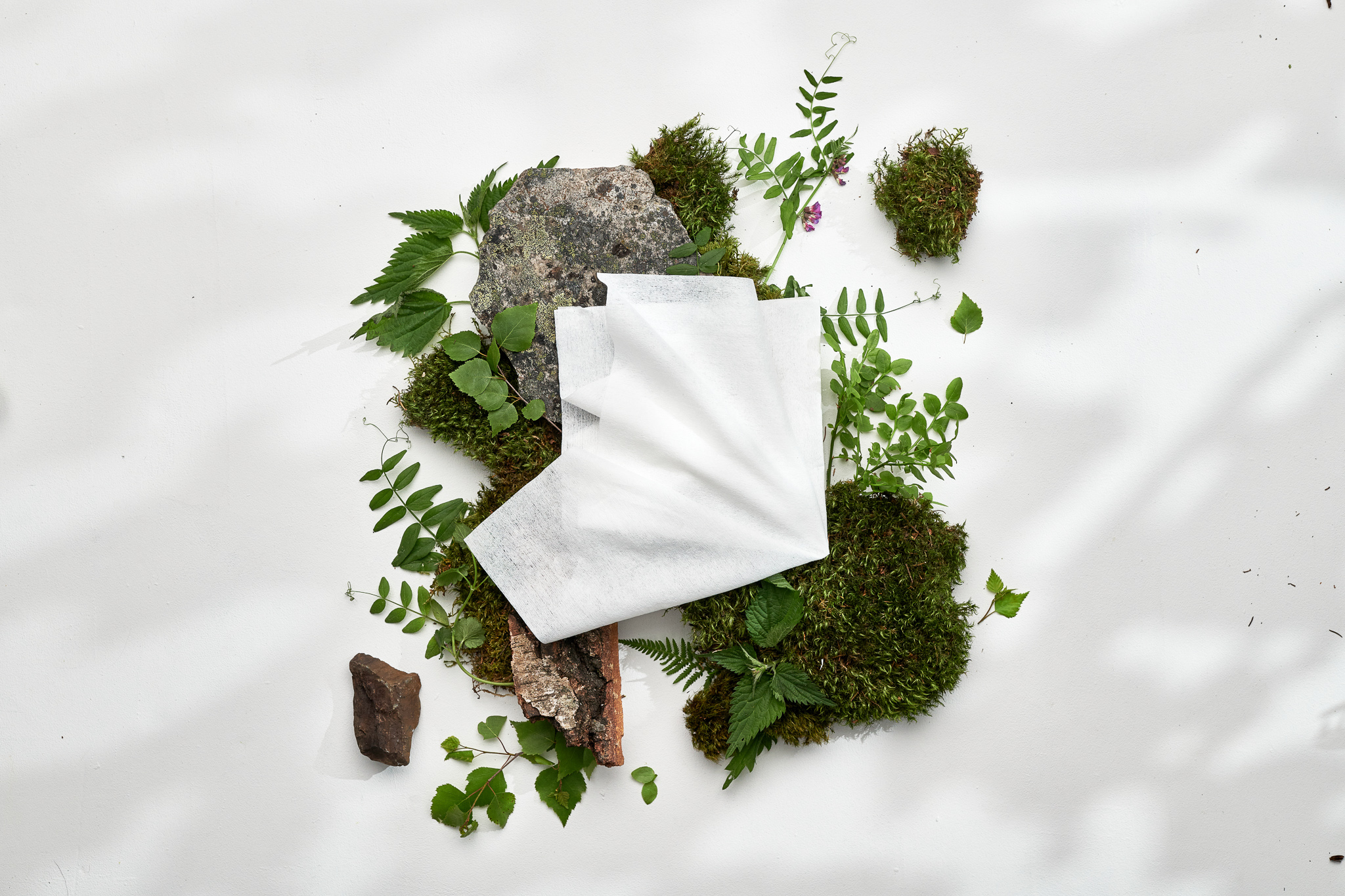Sustainable nonwovens
The nonwovens market has rapidly changed towards sustainable alternatives. Main drivers being consumers’ growing awareness of environmental issues and legislation. EU’s Single-Use Plastics Directive drives global emphasis on plastic free products. We at Suominen are well positioned to respond to this change. We launched our first plastic-free product already over 15 years ago.

Our product portfolio consists of a wide range of sustainable nonwoven products for different applications. In our plastic-free offering, we have products that are biodegradable, compostable, or dispersible. The products are made of renewable fibers such as viscose, pulp, lyocell, cotton or bamboo. In addition to renewable fibers, we also provide nonwovens made from other sustainable sources such as recycled rPET or PLA. Sustainable nonwovens is one of the four focus areas in our Sustainability Agenda. Our target is a 50% increase in the sales of sustainable nonwovens by 2025 compared to 2019 and to have over 10 sustainable product launches per year. In 2023, our share of sustainable nonwovens increased by 79% (compared to 2019). The target of sustainable product launches was very well achieved; we had a total of 12 sustainable product launches during 2023.
We are the frontrunner in sustainable nonwovens, and we are constantly developing new innovative solutions to the market as well as improving and expanding our current product offering. We launched enhanced BIOLACE® Ultrasoft in 2023 to match both the sustainability demands and the quality expectations of our customers and consumers. It is made of plant based, plastic-free, biodegradable, and compostable raw materials, while maintaining softness appreciated by baby and personal care markets.
Sales of sustainable products
Another great example of a frontrunner product in terms of sustainability is HYDRASPUN® Circula, our first nonwoven made with recycled paper. It is biodegradable as well as plastic-free and can be used in multiple applications. The product was created in cooperation with our customer.
Continuous development
Sustainability is one of the key themes in our R&D. We are a pioneer in producing sustainable nonwovens, and our R&D team has excellent know-how in sustainable fibers. Our pilot lines at Nakkila and Windsor Locks sites support our innovation work by, for example, enabling the testing of prototypes.
We are constantly researching new annual fibers in general, as an example, nettle and hemp, and regenerated cellulose in our New Fiber Center. Active cooperation with our suppliers, customers and other players in the market developing new innovative fibers is a cornerstone of our product development. For example, Suominen and Bast Fibre Technologies Inc. have cooperated for several years to investigate alternative fibers, including hemp.
On top of researching new raw materials, we focus on the end-of-life and biodegradability of renewable raw materials. The Suominen Green Lab in Nakkila has been in operation since 2022. The lab supports sustainable product development and validates claims that products are compostable. By continuously developing new and innovative solutions with a reduced environmental impact, we are able to provide a comprehensive offering of sustainable nonwovens to our customers.
In addition to creating new sustainable products, we see the importance of evaluating and minimizing the environmental impacts of all our existing products. Since 2021, we have evaluated the environmental impacts of our products by calculating their carbon footprints. By offering products with a lower environmental burden without compromising on quality, we can support our customers in reducing the environmental impact of their own products and to achieve their own sustainability goals.
Our aim is to grow our sustainable product portfolio even further for the benefit of our customers.
Sustainability categories
Definitions around what types of plastic are considered acceptably biodegradable have been incomplete and can be confusing to navigate when trying to select a nonwoven.
Below is a simplified visual guide to understanding some basics within sustainable options, and how certain raw materials can contribute to a nonwoven’s sustainability

Certifications
Suominen offers traceability certifications like FSC®, PEFC and SFI®, as well as skin-safe certifications like STANDARD 100 by OEKO-TEX®. For dispersible grades, Suominen manages INDA / EDANA compliance certificates.